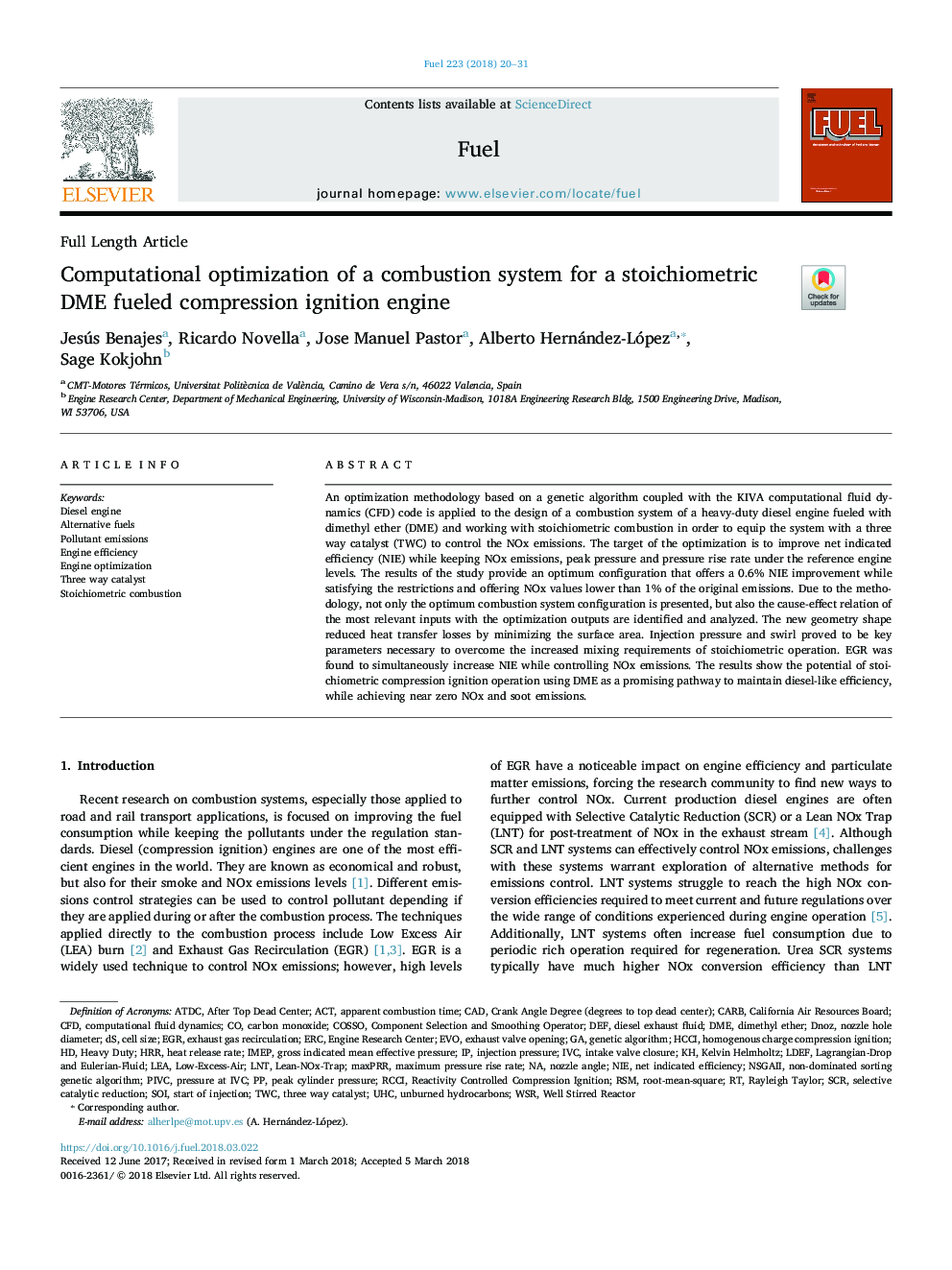| Article ID | Journal | Published Year | Pages | File Type |
|---|---|---|---|---|
| 6631239 | Fuel | 2018 | 12 Pages |
Abstract
An optimization methodology based on a genetic algorithm coupled with the KIVA computational fluid dynamics (CFD) code is applied to the design of a combustion system of a heavy-duty diesel engine fueled with dimethyl ether (DME) and working with stoichiometric combustion in order to equip the system with a three way catalyst (TWC) to control the NOx emissions. The target of the optimization is to improve net indicated efficiency (NIE) while keeping NOx emissions, peak pressure and pressure rise rate under the reference engine levels. The results of the study provide an optimum configuration that offers a 0.6% NIE improvement while satisfying the restrictions and offering NOx values lower than 1% of the original emissions. Due to the methodology, not only the optimum combustion system configuration is presented, but also the cause-effect relation of the most relevant inputs with the optimization outputs are identified and analyzed. The new geometry shape reduced heat transfer losses by minimizing the surface area. Injection pressure and swirl proved to be key parameters necessary to overcome the increased mixing requirements of stoichiometric operation. EGR was found to simultaneously increase NIE while controlling NOx emissions. The results show the potential of stoichiometric compression ignition operation using DME as a promising pathway to maintain diesel-like efficiency, while achieving near zero NOx and soot emissions.
Keywords
DEFDMECARBRCCILNTHRRTWCLEAACTIMEPUHCIVCERCPIVCLDEFIntake valve closureWSREGRaTDCSOINSGAIIHCCIReactivity controlled compression ignitionHomogenous charge compression ignitionGenetic algorithmNon-dominated Sorting Genetic AlgorithmPollutant emissionsCell sizeEvoafter top dead centerEngine optimizationMaximum Pressure Rise RateExhaust valve openingCFDComputational fluid dynamicsDimethyl etherRSMroot-mean-squareAlternative fuelsStart of injectionCADInjection pressurecarbon monoxideDiesel engineHeat release rateNIECalifornia Air Resources BoardUnburned hydrocarbonsheavy dutyThree way catalystEngine efficiencySelective catalytic reductionexhaust gas recirculationSCR
Related Topics
Physical Sciences and Engineering
Chemical Engineering
Chemical Engineering (General)
Authors
Jesús Benajes, Ricardo Novella, Jose Manuel Pastor, Alberto Hernández-López, Sage Kokjohn,
